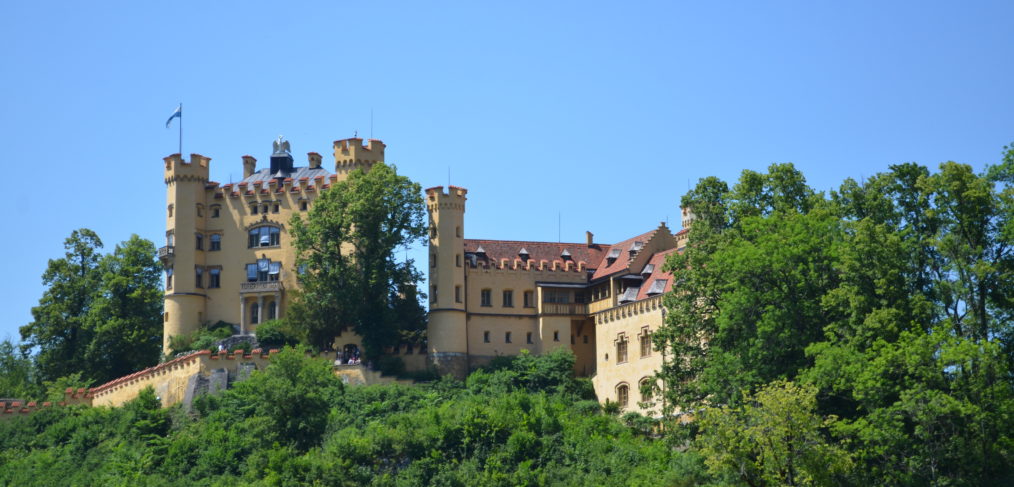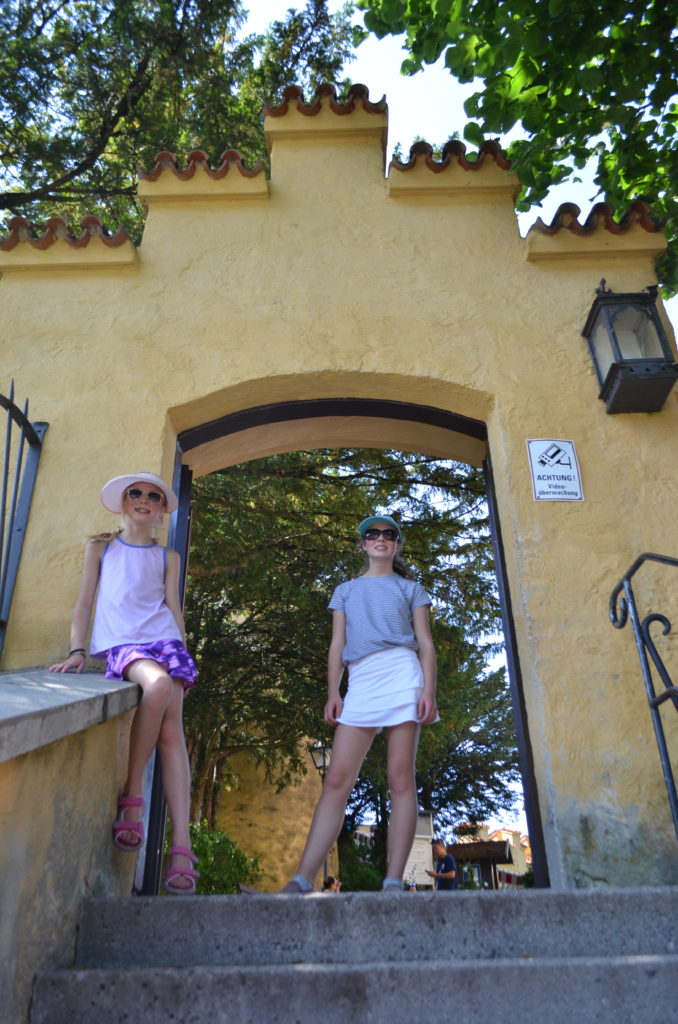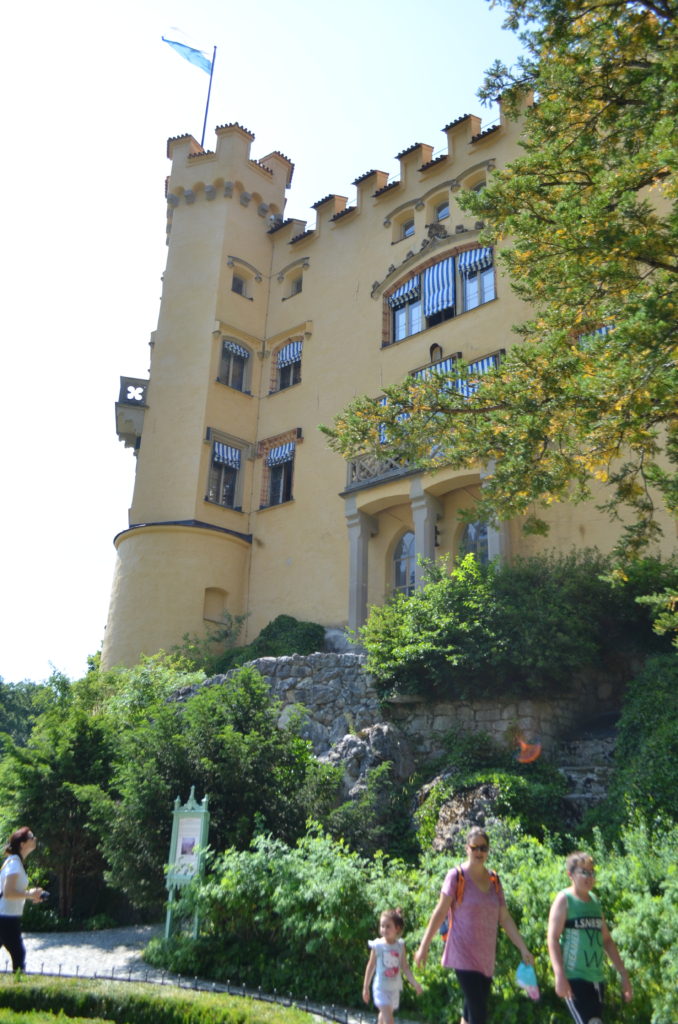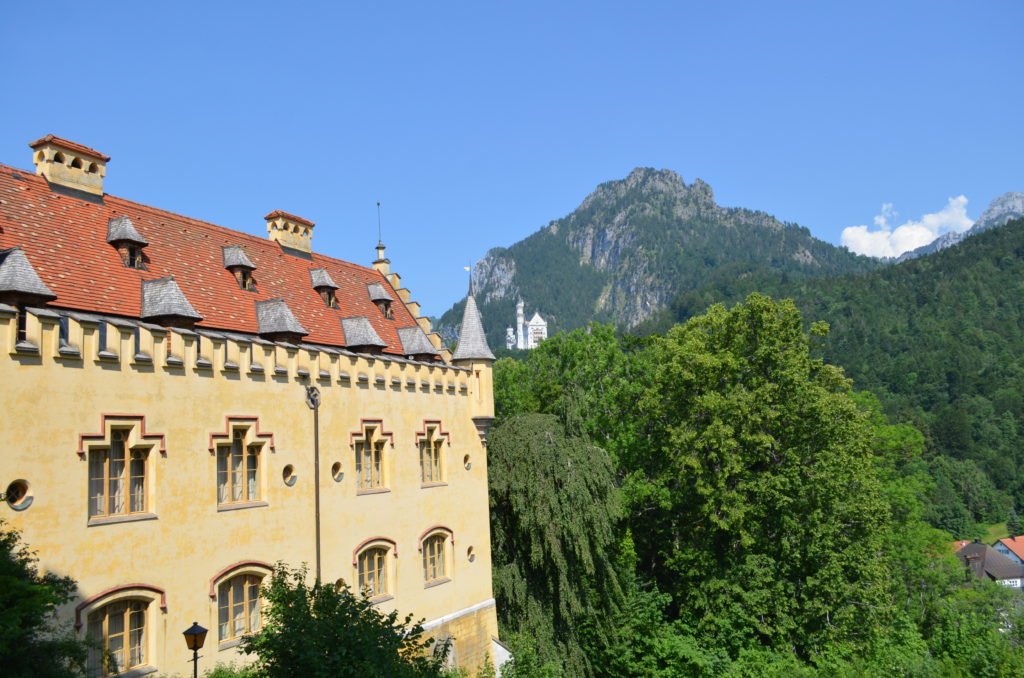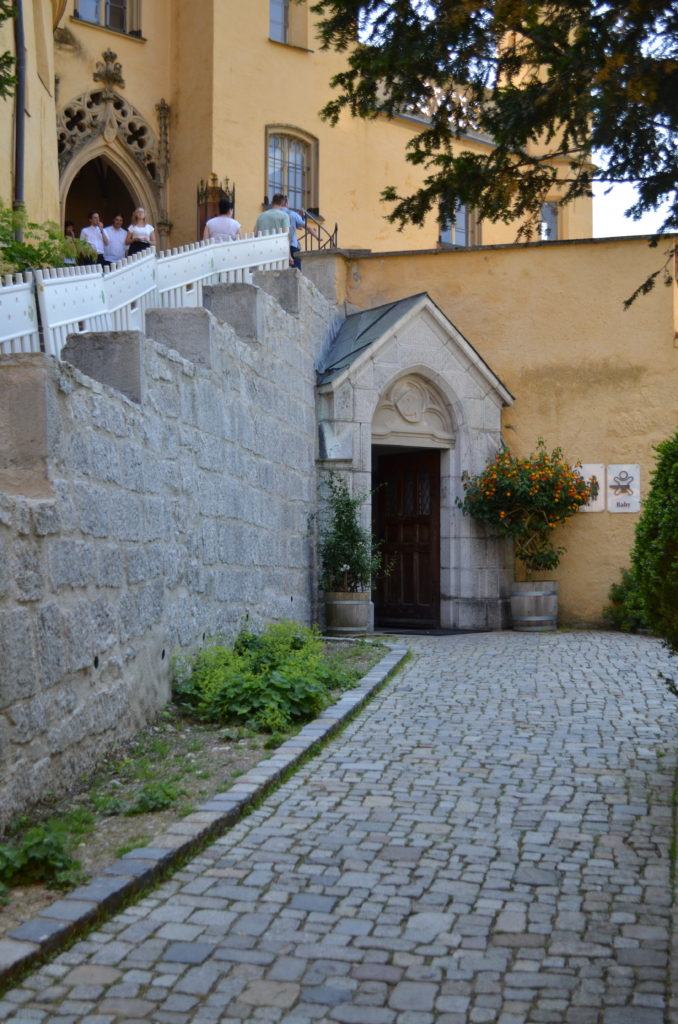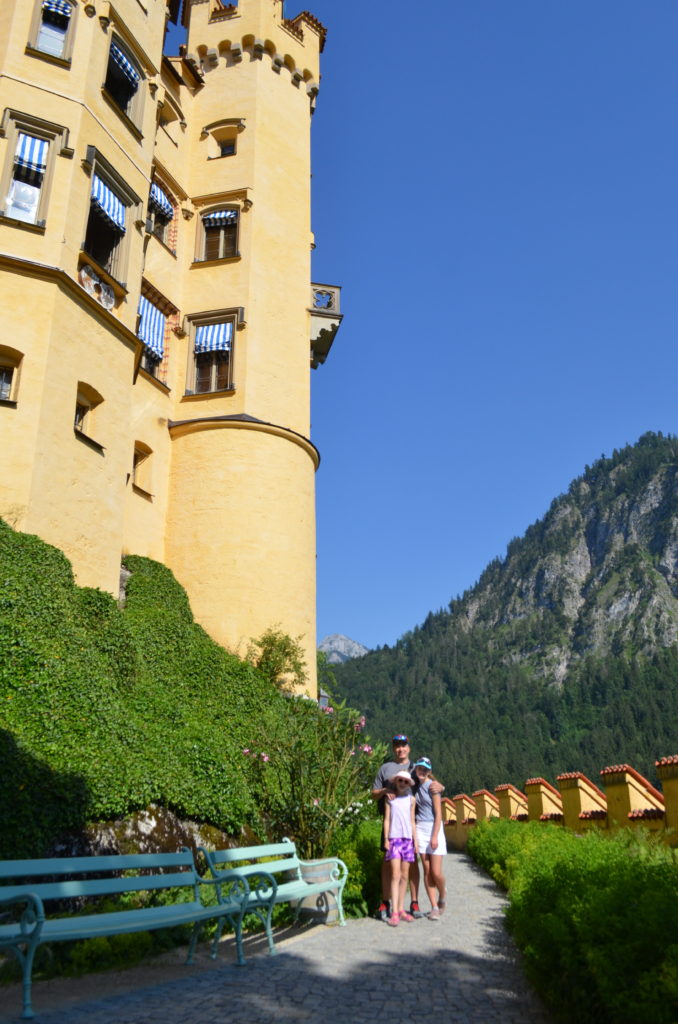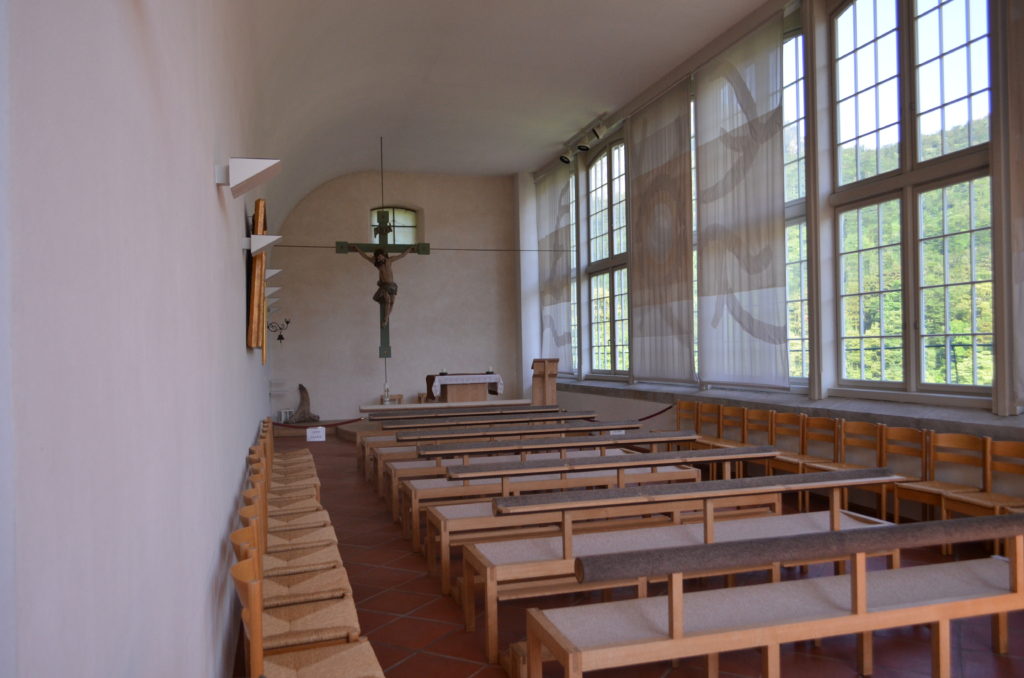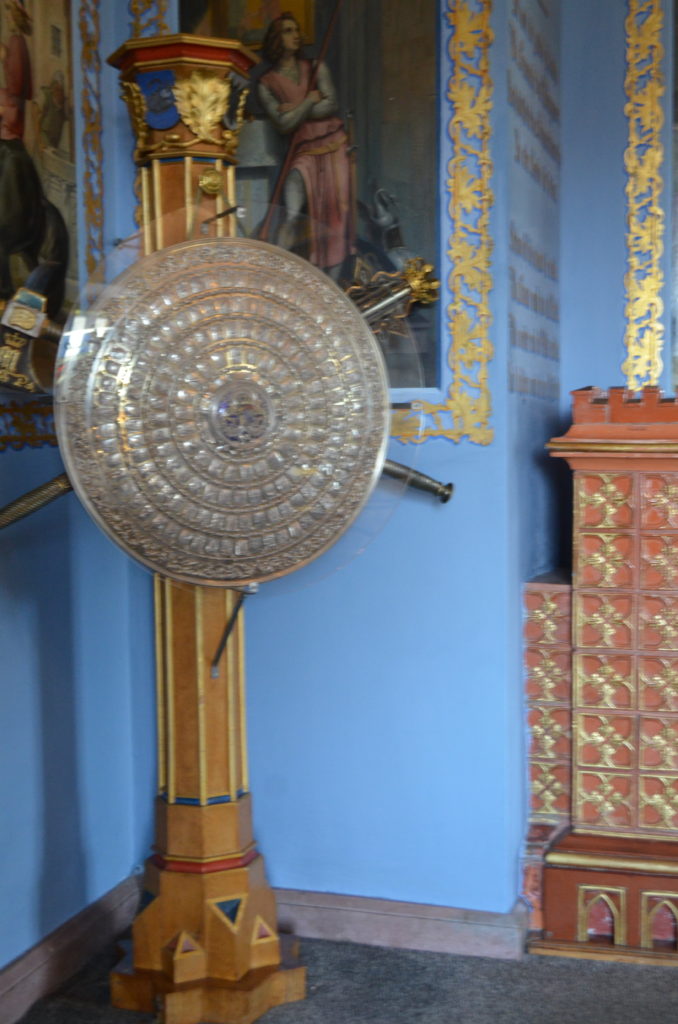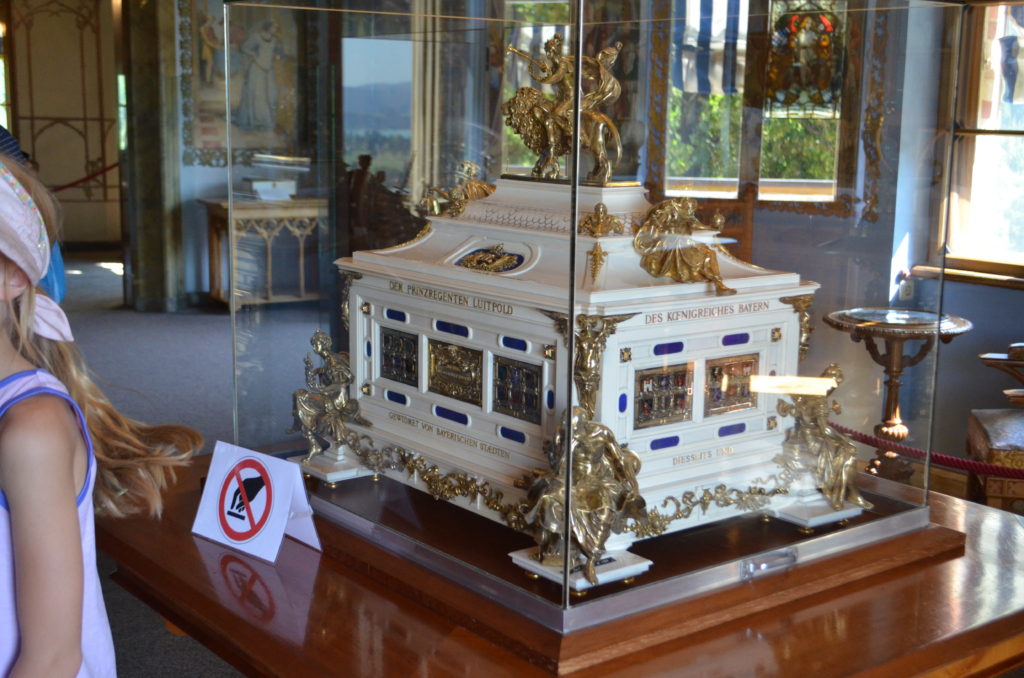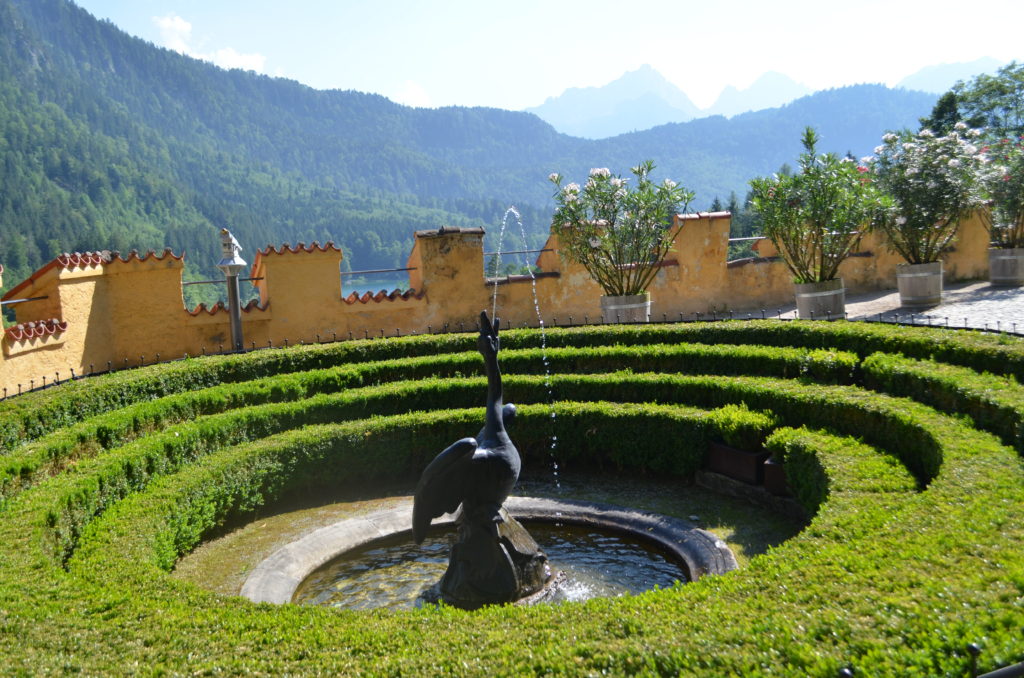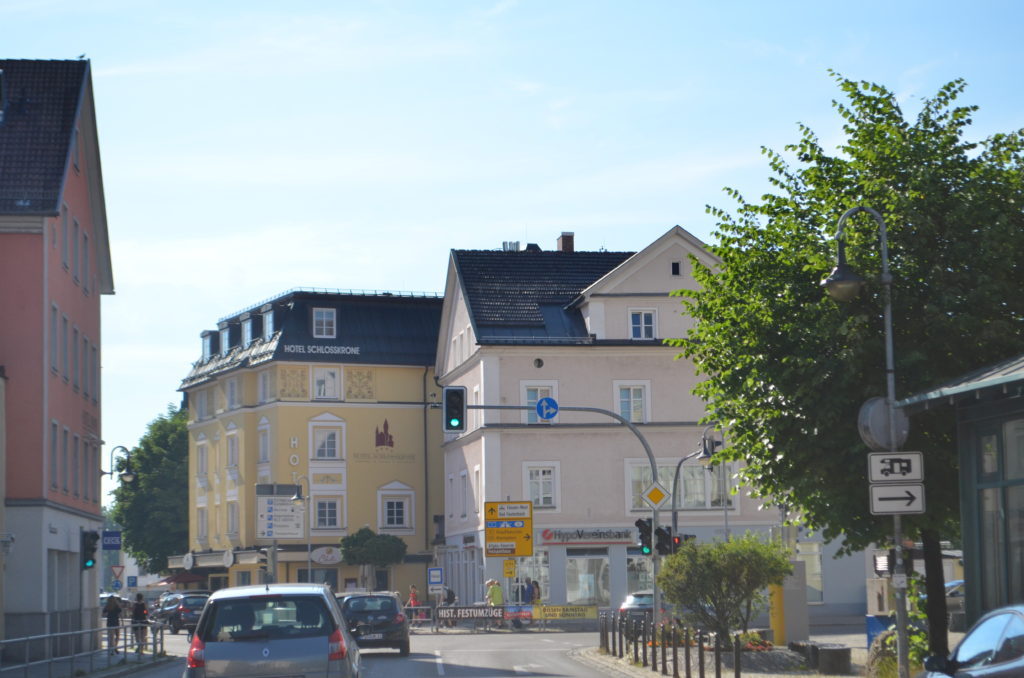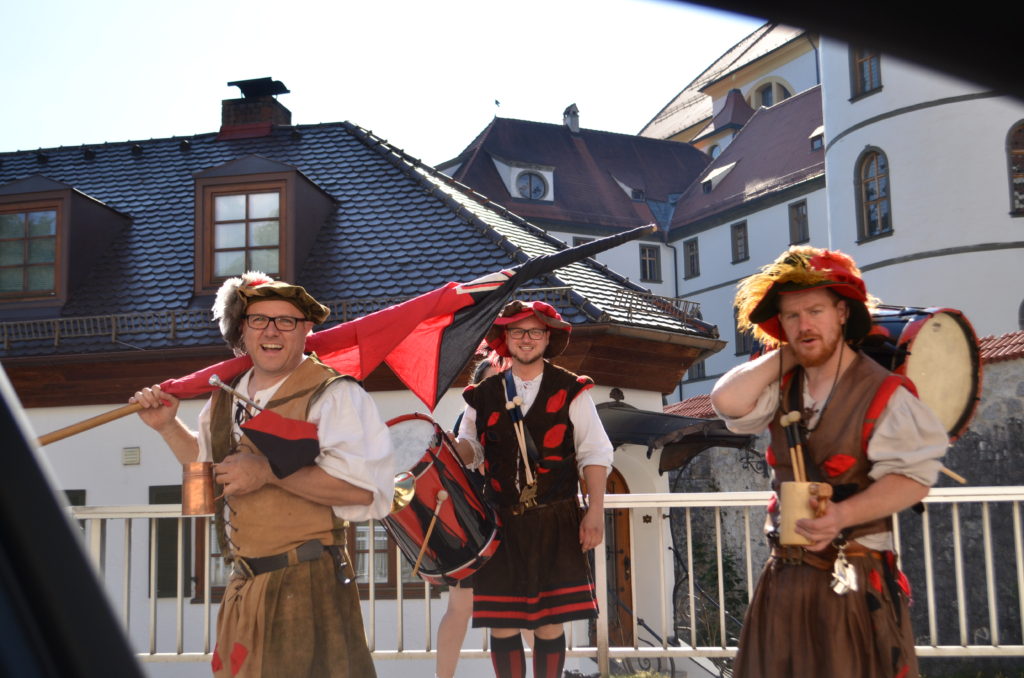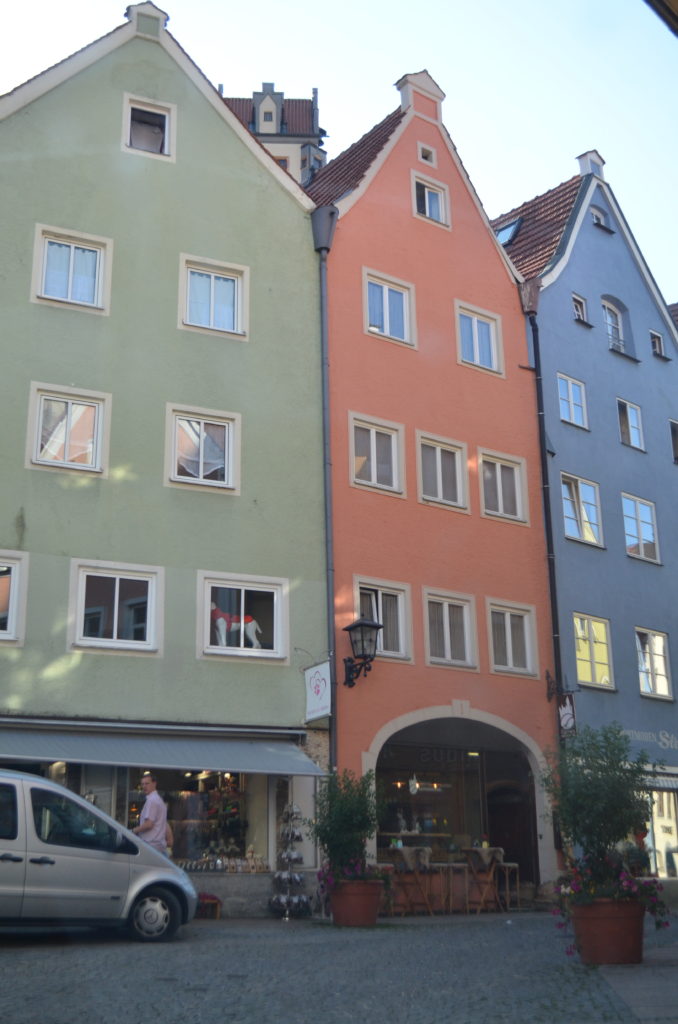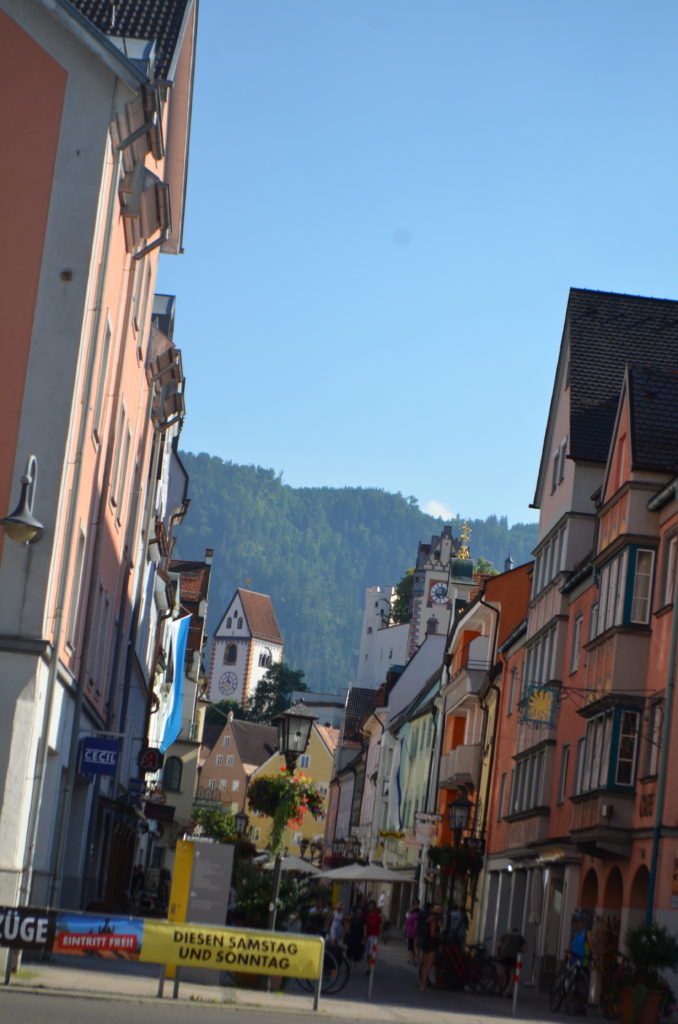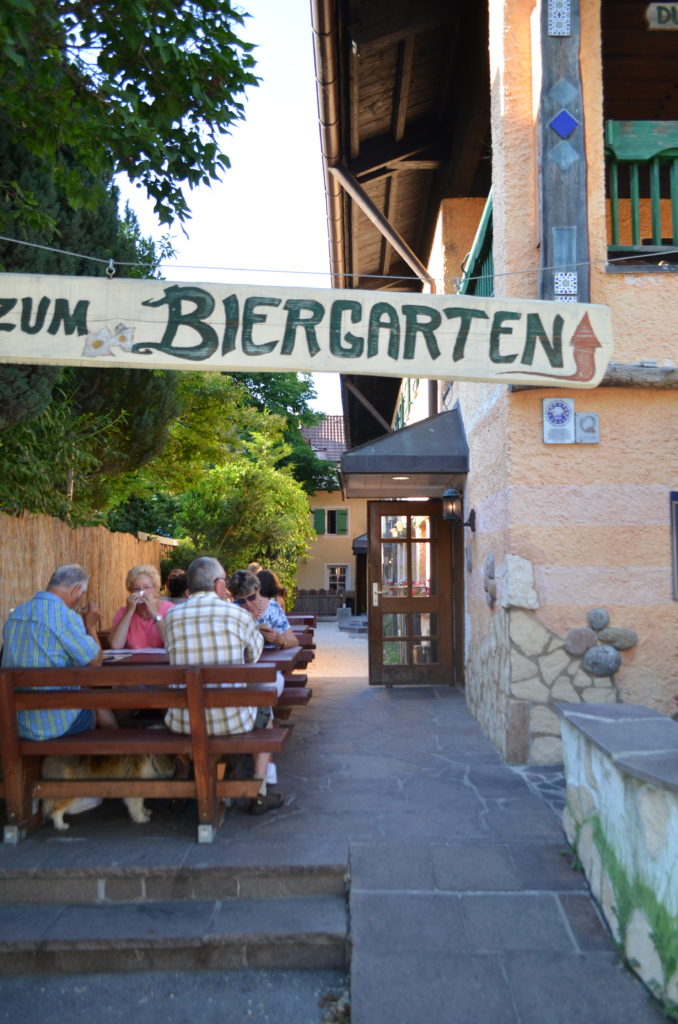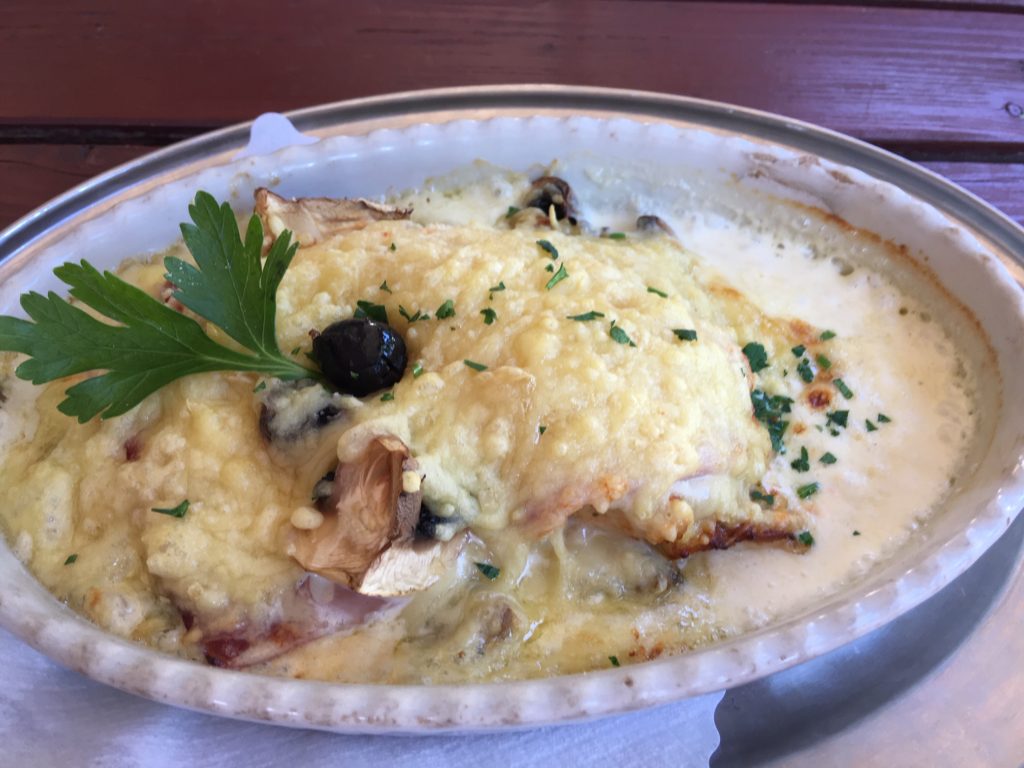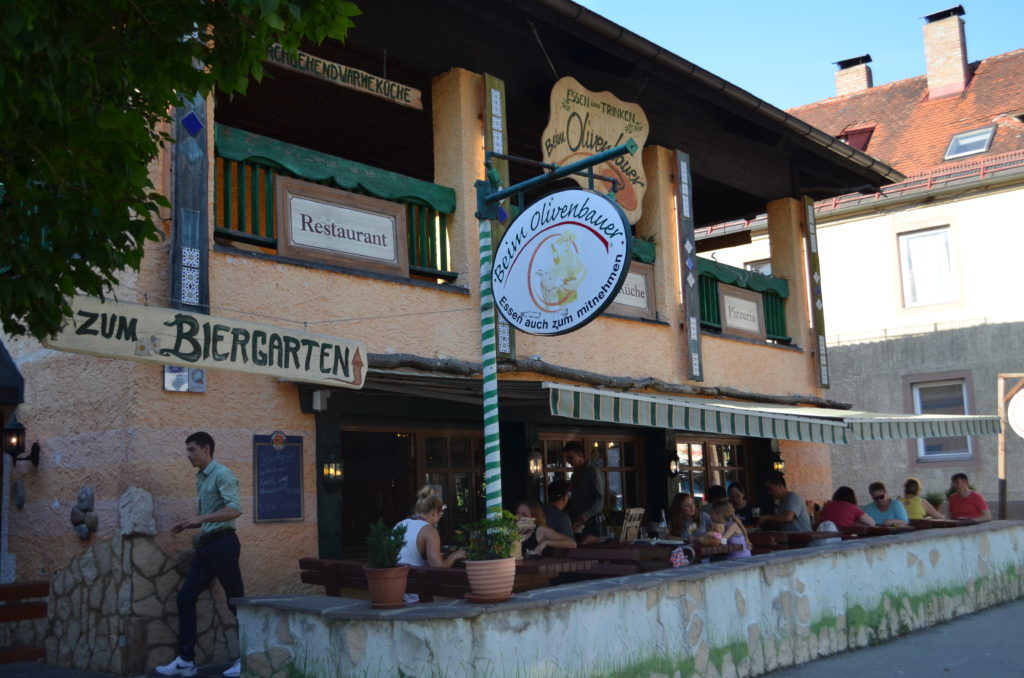The original castle of Fussen
Hohenschwangau, or Castle of the Swans, as the tour guide explained, is based in a simple fact that we’d never before heard: swans, as in a pair, male and female, dominate a single lake. Around this area of Fussen, many lakes exist, and for each lake, no matter the size, it has only a single pair, as they are very territorial. The entire valley is called “Valley of the Swans” for this reason. The knights wore embroidered patches on their arms as their insignia, and the rulers of Bavaria who inhabited this castle, have swans everywhere, from the solid silver chandelier hanging in the king’s private chambers, to the solid silver swans located on major artifacts and pieces. It’s all about the swans.
The overview
Hohenschwangau, pronounced, Hohen-shwong-gow, (say that a few times, because I did, until the tour guide stopped grimacing at my inabilities), is in the opposite direction of its sister castle, Nueschwanstein. Skipping over hundreds of years of details (sorry, I only have so much time), King Maximillian and his wife Marie of Prussia raised their two sons here. Prince Ludwig, who never married, decided to outdo this castle and built Nueschwanstein. We saw the room where he installed his telescope to watch the construction of the massive castle, which is much more imposing on the outside by far, but lacks the intricate details on the inside. He was single, he had nothing better to do than fight with his mom (tour guides off-the-cuff remarks, not mine), so why not build a castle 300,000 people from around the world would one day come see?
As you can see, the front entrance is far more familial and less imposing that the castle built by Maximillian’s son, Ludwig. The outdoor courtyard in the upper right, the view from the what’s essentially the deck to Nueschwanstein
Getting there
Since I already detailed the roads, parking and walk to Nueschwanstein, I’ll skip that part and go right to the castle. Just below the castle itself is another lot available for parking, and the lake which is not actually open to swimmers, but as the tour guide said, people come (not hundreds, but dozens) and use the shoreline. No one will get fined or arrested, but it does worry the locals and tourists, because they are increasingly trying to lure the swans in and feed them. This year, the mating pair only had a single duckling, and a tourist from China was caught trying to kick it to take a selfie. Pictures were taken and she was escorted off premises. Word to the not-so-wise: don’t kick the swans.
The “back entrance” for servants, as their building is adjacent to this (not pictured)
If you are walking up from the ticket office, or down from Nueschwanstein, it’s only another 10 minutes up another pathway, this one much narrower but still paved. It’s shaded as well, and not a big deal. The first building you see is the chapel, which from the outside looks more like a hothouse. Then up to the main house, which consists of two buildings, one for the servants, storage, carriages and the like, and the other is the primary residence.
This castle is what I’d describe as a “family castle” where it was actually used like a home–or rather a nice, summer retreat. And since you don’t want to leave for church, just have your own on site.
The tour
For $28 Euro, two adults and two children receive audio-guided tours. You have an actual tour guide, which controls the flow of 20 people through the 35-minute session, ensuring you stay together, don’t take any pictures or items, although that would be hard, since everything is behind glass barriers. The rooms are cool, since each room has windows that have been left open; and the views are awe-inspiring. Built on the top of the mountain, the castle has 360-degree views of lake, mountains and valley. The Queen Marie (formerly of Prussia) had an entire floor to herself, including music, writing, waiting and bedrooms, each looking out to different parts of the territory. Just above her on the top floor is the King’s quarters. In his room, he had two secret doors with painted murals, one for the bathroom and the other for his stairs leading down to his wife’s bedroom. Love those sneaky doors.
The shield on the left was a wedding gift made of solid silver, each of the small square pieces represents the coat of arms of a wealthy family who contributed to its creation. Behind it is an ax and a sword (yes, you could touch it). To the right was a gift to Maximillian for his 80th birthday. The corners are bronze, the blue is lapiz and what you can’t see are detailed monograms made of diamonds.
The other area open for the tour is the main entryway, the reception and dining areas, as well as the what would be considered the main entertaining areas on either side of the dining hall. The unique factor of this castle is much that every wall has original, mural paintings on every wall, capturing and depicting the history of the people, the rulers and the culture significance of the area. Gold leaf is everything, it too is authentic and original. The Bavarian guides are people are rightly proud of the respect shown this castle, and its significance. We appreciated the piano made of walnut given to the Queen when she was fifteen by her parents (in her music room) and the contrast of the one made and used by the King upstairs in his bedroom (hers was nicer/more refined).
Swans everywhere! This time in the garden overlooking the lake beyond.
The town of Fussen
Below both castles is the town of Fussen, which offers a ton of hotels, but not in the traditional, American style. Most are rather hidden, are unassuming and all unique to this culture. You won’t find a single, big-name, brand hotel in the area, which is a good thing. In fact, the hotels are considered historical sites, and signs posted along the roadways show a “hotel tour” so tourists can go visit each and every one. After finished our visits, we were game, and thought, why not? After four, we stopped, but only because we were starving and needed to eat and drive the @2 hrs back home. The ones we saw were lovely (and no, I didn’t take pics. I only have so much time/blog space).
The town is lovely, quaint and also offers Fusseen Castle, but this is a completely different style. My camera battery died (shame on me) so I only got a couple of pics.
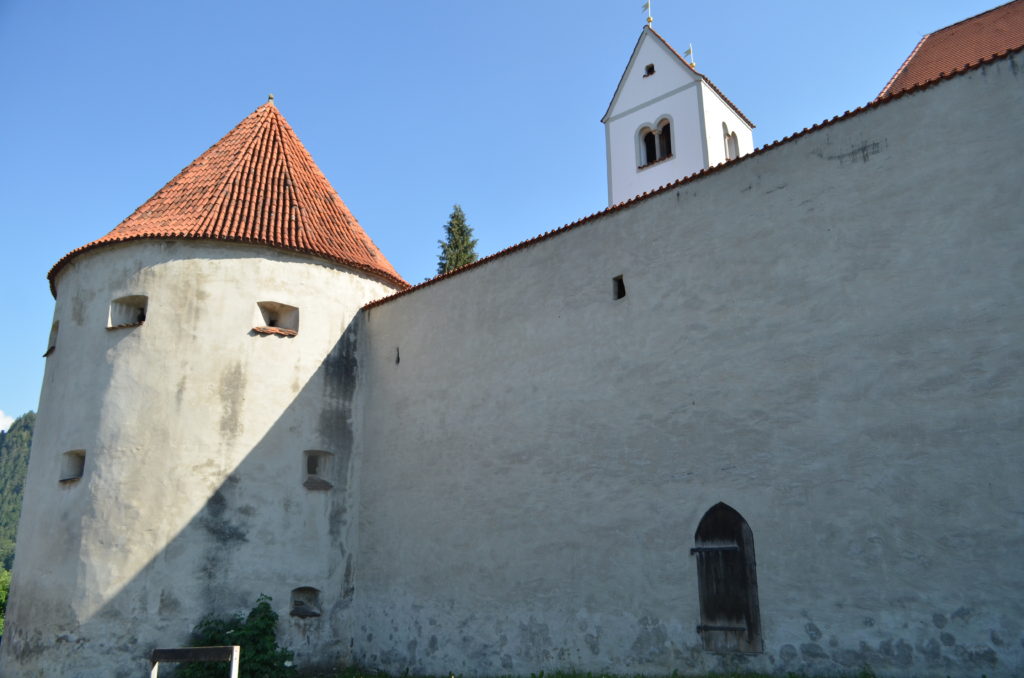
A singular pic before my camera croaked, but it the rest of it was much more majestic, although in no way comparable to either of the other two castles- this is much more basic, at least from the outside.
What I liked
The situation of the castle, the views from every window, its ornate and detailed characteristics, and the outdoors, which are incomparably nicer than Nueschwanstein. You can tell this was more of a family castle, because it has gardens, fountains, sitting areas and touches completely lacking at the grand Nueschwanstein. That’s what I’d call a man’s castle. In fact, this castle was simply deserted by comparison.
Fussen had a festival the weekend we went, which really meant more food for us!
Another day, another million calories consumed. What you don’t see is the actual “garden” in the back, past the people on the upper left. As with most beer gardens, it’s a tree-covered area where people drink beer. Rog is always incensed that sparkling water is $6 Euros a bottle, whereas a beer is about a single Euro. Porsche asked politely if he would rather she took up drinking to save him money. Snap.
What I disliked
Nothing. It was all good! The path up, the tour (size, length, tenor and information) were great. Of course, we all want to see more—which would have included the downstairs of the castle, and the other building, but life is life. Castle operations are a business, and with the volume of people and tours, I’ll have to reach another level in this life to get the private, see-it-all view.
Recommendation
Absolutely do this tour if you are a history buff. Like Nueschwanstein, walking the grounds is free of charge, but the inside is not to be missed.

